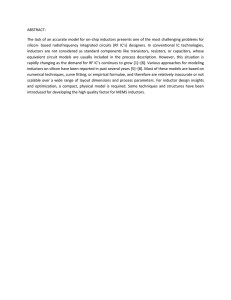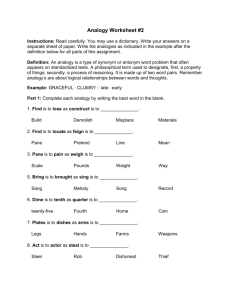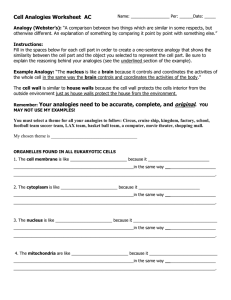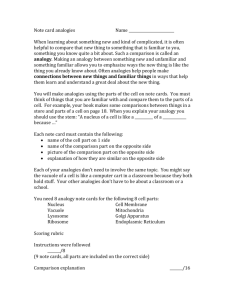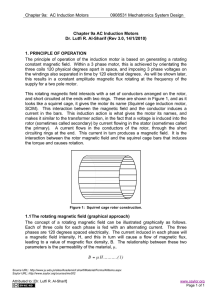Analogy to Mechanical Basic Components
advertisement
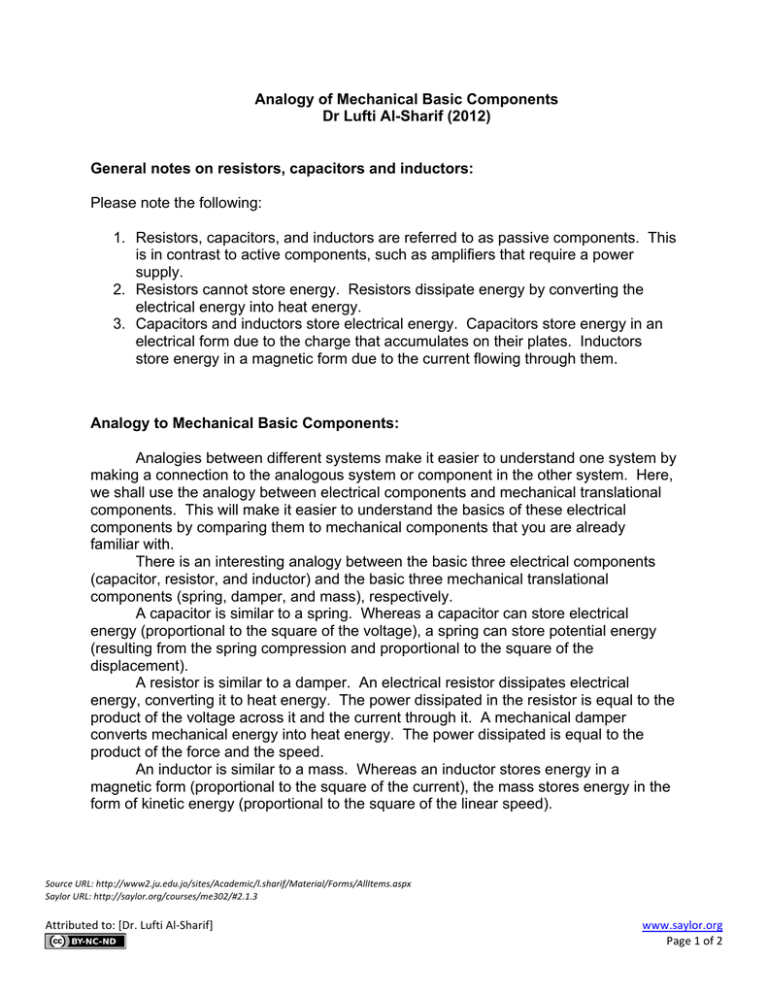
Analogy of Mechanical Basic Components Dr Lufti Al-Sharif (2012) General notes on resistors, capacitors and inductors: Please note the following: 1. Resistors, capacitors, and inductors are referred to as passive components. This is in contrast to active components, such as amplifiers that require a power supply. 2. Resistors cannot store energy. Resistors dissipate energy by converting the electrical energy into heat energy. 3. Capacitors and inductors store electrical energy. Capacitors store energy in an electrical form due to the charge that accumulates on their plates. Inductors store energy in a magnetic form due to the current flowing through them. Analogy to Mechanical Basic Components: Analogies between different systems make it easier to understand one system by making a connection to the analogous system or component in the other system. Here, we shall use the analogy between electrical components and mechanical translational components. This will make it easier to understand the basics of these electrical components by comparing them to mechanical components that you are already familiar with. There is an interesting analogy between the basic three electrical components (capacitor, resistor, and inductor) and the basic three mechanical translational components (spring, damper, and mass), respectively. A capacitor is similar to a spring. Whereas a capacitor can store electrical energy (proportional to the square of the voltage), a spring can store potential energy (resulting from the spring compression and proportional to the square of the displacement). A resistor is similar to a damper. An electrical resistor dissipates electrical energy, converting it to heat energy. The power dissipated in the resistor is equal to the product of the voltage across it and the current through it. A mechanical damper converts mechanical energy into heat energy. The power dissipated is equal to the product of the force and the speed. An inductor is similar to a mass. Whereas an inductor stores energy in a magnetic form (proportional to the square of the current), the mass stores energy in the form of kinetic energy (proportional to the square of the linear speed). Source URL: http://www2.ju.edu.jo/sites/Academic/l.sharif/Material/Forms/AllItems.aspx Saylor URL: http://saylor.org/courses/me302/#2.1.3 Attributed to: [Dr. Lufti Al-­‐Sharif] www.saylor.org Page 1 of 2 Optional Reading: This analogy can be further extended to other variables in the two systems as well to other systems. For further details on the analogy between electrical, mechanical, fluidic, and thermal systems, you can read the following document. Reading: University of Jordan: Dr. Lutfi Al-Sharif’s Mechatronics System Design Course Material: “Chapter 4: System Analogies” Link: University of Jordan: Dr. Lutfi Al-Sharif’s Mechatronics System Design Course Material: “Chapter 4: System Analogies” (PDF) Instructions: Please click on the link above. Once you have accessed the webpage, click on the link for “Chapter 4: System Analogies” to download the PDF. Please read the entire chapter (7 pages). Terms of Use: Please respect the copyright and terms of use displayed on the webpage above. Source URL: http://www2.ju.edu.jo/sites/Academic/l.sharif/Material/Forms/AllItems.aspx Saylor URL: http://saylor.org/courses/me302/#2.1.3 Attributed to: [Dr. Lufti Al-­‐Sharif] www.saylor.org Page 2 of 2
